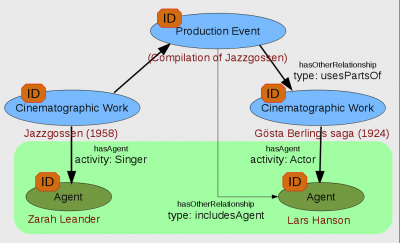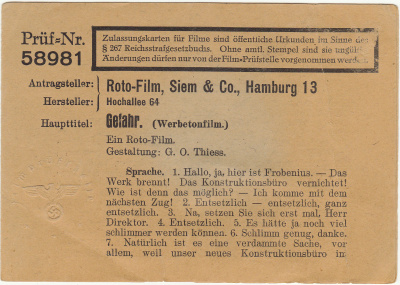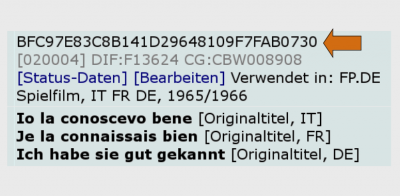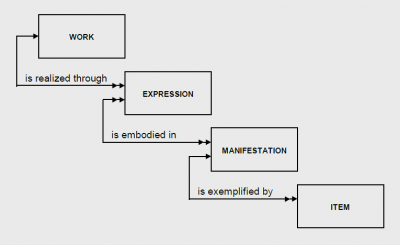Where philosophers can help
Any statement about something must identify the thing in question. Introducing description levels into metadata also means introducing different concepts of identity.

Graph based on information from the Swedish Film Database
|
In the relationship graph from the preceding session we identified instances of Cinematographic Work by a title, and instances of Agent by a name.
As databases grow, titles and names can quickly become ambiguous, while machines require unambigous indentifiers for operating on relationships. Moreover, in this example we have an instance of an Event entity, for which no "natural" identifier exists.
|

From: Internet Movie Database, http://www.imdb.com/ accessed 13-Oct-2010
|
For many years, the creators of the Internet Movie Database (and also those of Wikipedia) believed that all things of interest could be identified uniquely and persistently by a name, a title, or similar.
This identifier scheme turned out to be difficult to manage as the databases grew in size.
In recent years, both databases have introduced non-semantic identifiers in the form of numbering schemes that remain hidden from the user interface.
|

|
No bureaucracy without identifiers.
An identifier such as "58981" can only be unique within a particular scope, in this case, the set of German film censorship records.
In databases, the scope of an identifier is usually limited to an entity from the data model. In this way, different entities can share the same set of identifiers, e.g. a Cinematographic Work 12345 can be distinguished from an Agent 12345.
In the Linked Open Data paradigm, the scope of an identifier is determined by a namespace. All UniformResource Identifiers (URIs) must contain a component that identifies a namespace.
|

From the in-house database of Deutsches Filminstitut, Frankfurt am Main
|
This is an identifier from the DIF database which uses globally unique identifiers (GUIDs) for all instances of all entities.
GUIDs are numbers with 128 binary places (38 decimal places) which are constructed in such a way that the chance of two computers generating the same ID is extremely small, even over long periods of time.
GUIDs are particularly useful in environments where data is created without centralised control.
|

From: Functional Requirements for Bibliographic Records. IFLA UBCIM Publications – New Series Vol 19. München: K.G. Saur, 1998
|
Identity (expressed through identifiers) plays a major role in interpreting the FRBR description layers.
Two items can only share an identity at the manifestation level. Likewise, two manifestations can only share an identical expression, etc.
Levels or modes of identity have been (and continue to be) a major topic of analytical philosophy.
|




